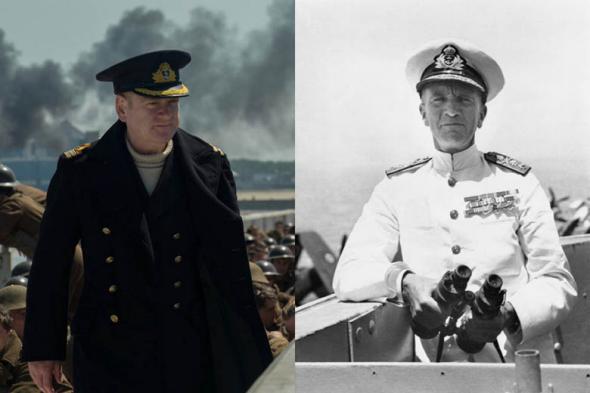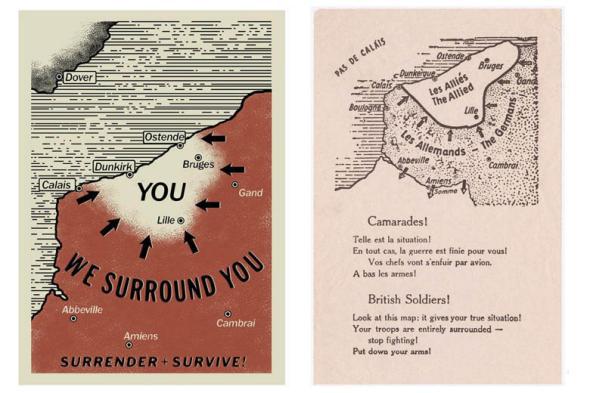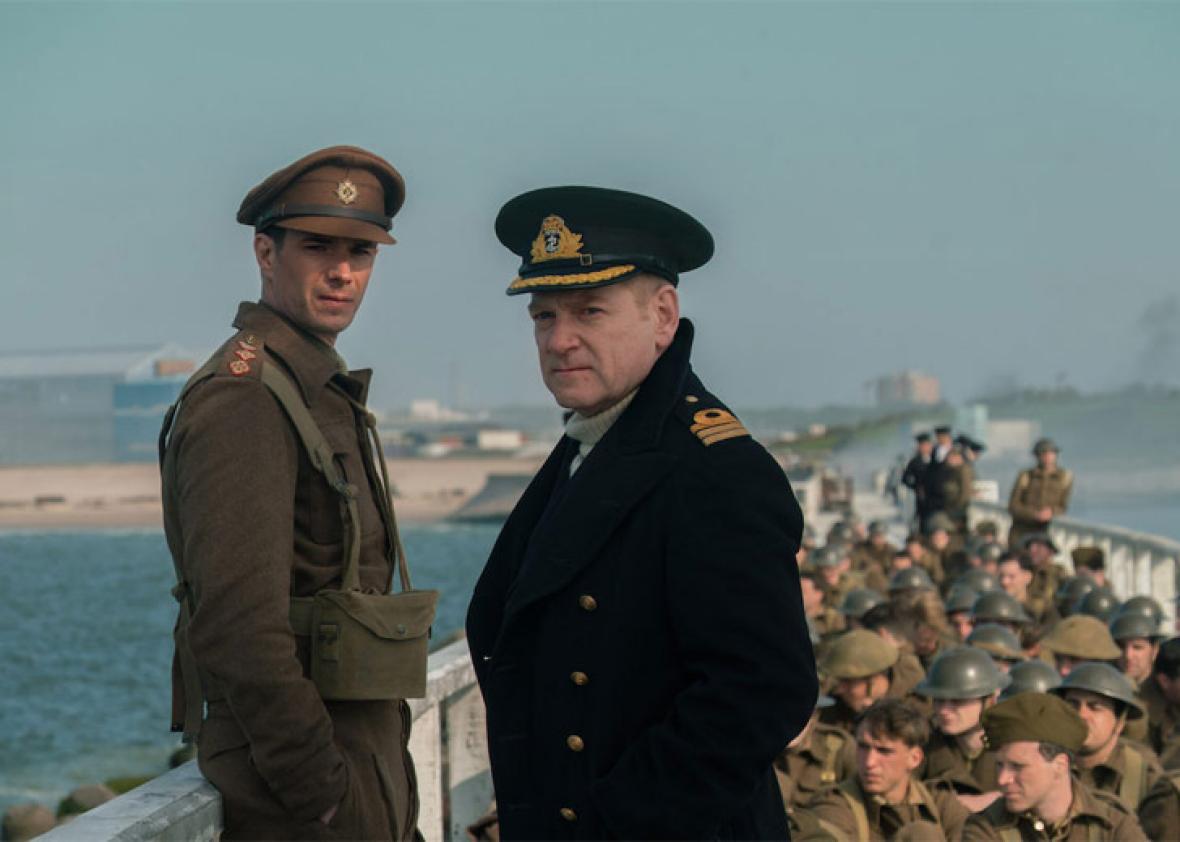Christopher Nolan’s Dunkirk is likely to be the most widely seen or read depiction of history released in 2017. So how does a British historian who teaches and writes about World War II rate it as history?
In terms of accuracy, it rates pretty highly. There are no big, glaring historical whoppers. The characters whom Nolan invents to serve his narrative purposes are realistic, and his scenes depict genuine events or hew close to firsthand accounts. And why not, since fiction could hardly outdo the drama and emotion of the reality? Nolan made clear that he intended the film to be a kind of history of an experience, and he succeeds about as well as any filmmaker could in conveying what it might have felt like to be on that beach.
For example, one theme that’s repeated across the reminiscences of WWII veterans on all sides is the stark animal terror of being subjected to unopposed air assault. If artillery barrages and shellshock were the defining experiences of World War I, strafing and bombing and resultant mental breakdown were arguably the defining experiences of World War II. And several scenes in the film must be as near a manifestation of that experience as can be safely had at the multiplex.
But, of course, Nolan didn’t set out to present history the way scholars do it. Historians’ careers rest on perfect accuracy, and nuance and complication are prized—even at the high cost of turning away nonprofessional readers. So, Nolan makes choices in assembling, and sometimes inventing, his facts that academics would not. Let’s look at these choices made in the name of dramatizing experience and check them against the evidence as embodied by eyewitness accounts and documentary sources.
Why the obsession with airplane fuel?
Here, Nolan is dramatizing something central to the entire event. The Royal Air Force was not able to provide a lot of help to the men trapped on the beach because of its fighters’ range. As the film depicts early on, pilots had to carefully conserve fuel on the Channel crossing and, even then, could only operate for less than an hour over Dunkirk itself. What happened far more often was that, while en route, fighters came upon German planes attacking the Royal Navy and had to battle them over the sea.
This wasn’t comforting to the men trapped on the beach, but if the Royal Navy’s Destroyers were sunk (six of around 40 were), there would be no cover for the retreat.
The RAF did battle German fighters and bombers over the three beaches of Calais, Dunkirk, and Ostend themselves, but a recurring theme in survivors’ accounts is that they never saw the RAF in the skies above them.
“Where the hell were you?”
This is reflected in one of the film’s final lines spoken by an evacuated soldier who sees another evacuee with pilot’s wings. In truth, pilots’ receptions were often far less kind. A pilot who bailed over Dunkirk beach had to fight to get on a boat. He was in the air again the day after his return to England.
Did the British really hold back ships and planes from the fight?
Yes. The British were rightly afraid of invasion with the developing collapse of France, and their main means of defense was the Royal Navy, not the Army. That navy, along with the RAF, would have to be counted on to sink an invasion flotilla as well as protect the flow of supplies over the North Atlantic. So senior officers in Westminster ordered the withdrawal of the best class of Destroyers from the scene.
Similarly, many England-based RAF squadrons were barred from the fight on the grounds that they would be needed to defend home. Still, RAF losses were very large, with 145 planes downed in nine days of fighting.
Was there a real-life Commander Bolton?

© Warner Brothers and Imperial War Museums
Kenneth Branagh’s character, Commander Bolton, seems to have been inspired by the real-life Captain William Tennant, who was on the scene and is credited with doing an astounding job of making the best he could out of the embarkation.
Tennant later fought the Japanese off Singapore when HMS Repulse was sunk from beneath him. He survived to help organize the D-Day landings, even helping to lay an oil pipeline under the channel to fuel the invasion force. In other words, he made a pretty successful return to northern France after a hiatus of a few years. No word on whether he delivered dramatic one-liners as well as Kenneth Branagh.
Were other characters based on historical figures?
Characters such as Fionn Whitehead’s Tommy and Harry Styles’ Alex are certainly true to life. Some survivors did endure several failed attempts to get off the beach before finally getting across the Channel. Others shivered on the weather decks of Royal Navy ships for fear of being trapped in the crowded holds in case of disaster, as does Aneurin Barnard’s “Gibson.”
Were those pamphlets in the opening scenes invented for exposition?

Left: Warner Bros. Right: Cornell University – PJ Mode Collection of Persuasive Cartography.
No. They were real, but the genuine ones weren’t in living technicolor. Quickly churned out by intelligence officers behind the lines on commandeered newspaper presses, such pamphlets encouraging a surrounded enemy to surrender were used by all sides throughout the war.
Surely, the soldier striding off into the breaking waves is a bit of melodrama.
Sadly, no. Witnesses tell of a man who dropped his gear and told those around him that he was going to walk to England. Others had similar mental breakdowns and wandered off the beach.
Wasn’t it an absurd bit of luck that a small boat came upon that ditched Spitfire?
Over the dayslong fight, pilots wisely tried to ditch or bail near the Royal Navy vessels in the Channel or small boats that peppered the sea. There were a lot cases just like the one in the film, though maybe not with the nick-of-time heroics.
OK, but isn’t it absurd how long that Spitfire glides?
Not really. Veterans reported gliding their Spitfires 15 miles or more.
What was the deal with the French being denied places on the boats and ships?
This was the policy of high-ranking officers on the spot, not because they were trying to be cruel but for three reasons: Hope for France was essentially lost, the French military in the area was in such disarray that its policy about evacuation was unknown, and the ships evacuating men were British. Churchill was strongly in favor of taking the French off the beaches to encourage France to keep fighting. Some French officers made the heroic decision that they would not retreat and would cover their Allies’ escape to fight another day.
The situation was grim. In ways represented in the film, fights did erupt between the British and some French soldiers desperate to escape. Frantic men certainly were denied places on boats, while men who fell overboard had to be abandoned.
What about Commander Bolton’s last line, saying he would stay to lift off the French?
This line is more troublesome, because it suggests the French had their own Dunkirk. It’s true that after the British and other Allied troops were evacuated—there was an effort focusing on the French that resulted in 75,000 rescues. But the scene of the French Army manning the sandbag barricade while Tommy escapes through them is a bit more true to life, because the fact is that many tens of thousands of French and French colonial troops fought and died as a rearguard for the escaping British.
The vast majority of the French who’d been evacuated returned to France after it came to terms with Germany. This isn’t because most were particularly fond of their conquerors or Nazism but because their country was no longer at war and their officers and government told them to come home. Besides, Germany was essentially holding the country hostage to assure their good behavior.
What’s missing from the film that a historian might add?
In the film, we see at least one French soldier who might be African. In fact, soldiers from Morocco, Algeria, Tunisia, and elsewhere were key to delaying the German attack. Other African soldiers made it to England and helped form the nucleus of the Free French forces that soon took the fight to the Axis.
There were also four companies of the Royal Indian Army Service Corps on those beaches. Observers said they were particularly cool under fire and well-organized during the retreat. They weren’t large in number, maybe a few hundred among hundreds of thousands, but their appearance in the film would have provided a good reminder of how utterly central the role of the Indian Army was in the war. Their service meant the difference between victory and defeat. In fact, while Britain and other allies were licking their wounds after Dunkirk, the Indian Army picked up the slack in North Africa and the Middle East.
Finally, while it’s beyond the scope of the film, around 1 in 7 Allied soldiers who retreated to Dunkirk were captured and made prisoners of war—something that is only hinted at by the shot of Tom Hardy’s character surrendering. They had a horrible march to Germany in front of them and over four years of hunger and servitude. Note: Hogan’s Heroes is not good history.
Did an RAF pilot shoot down a dive-bomber over Dunkirk while gliding?
What do you think?
